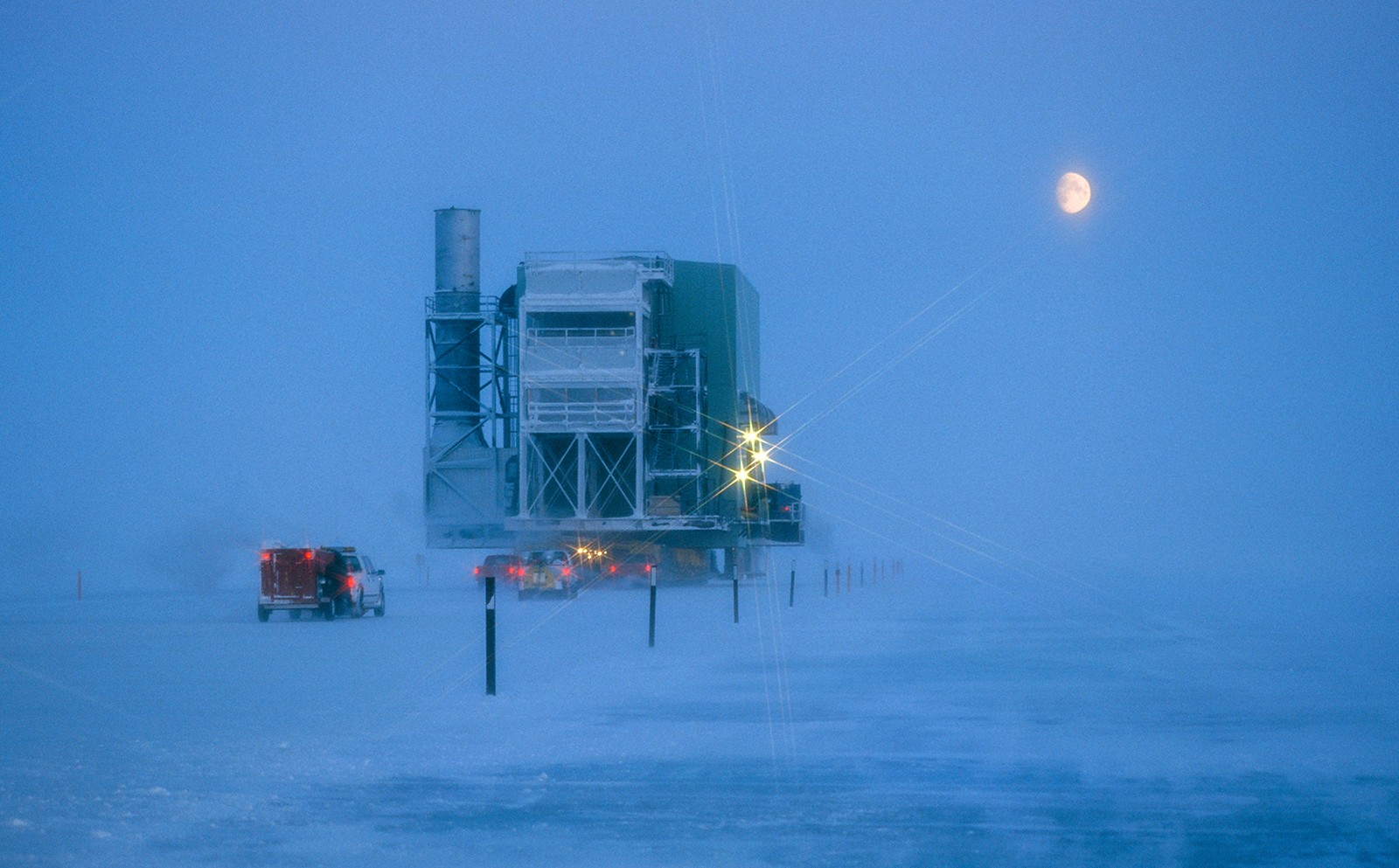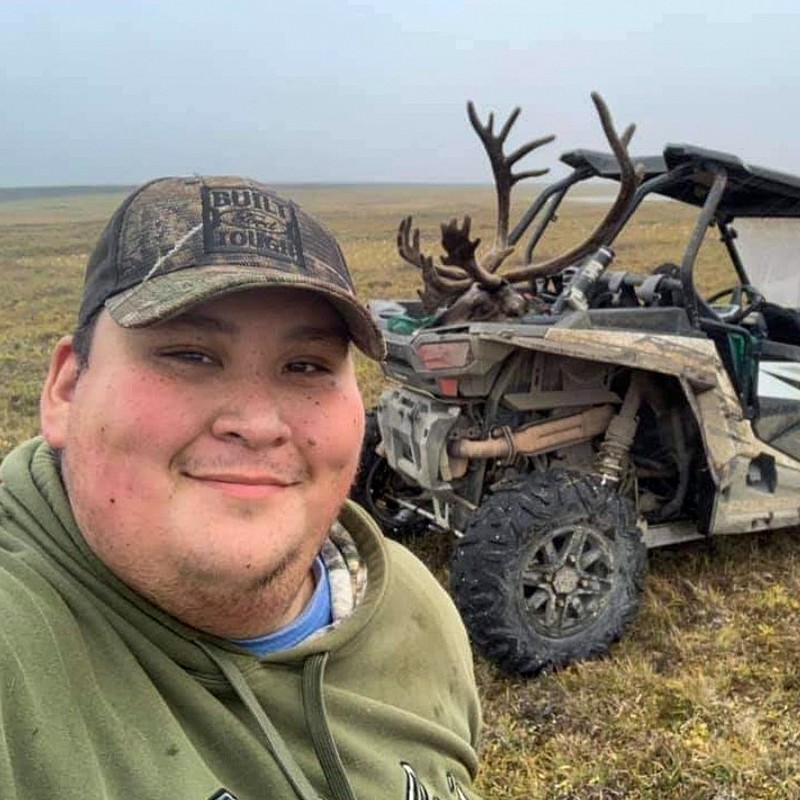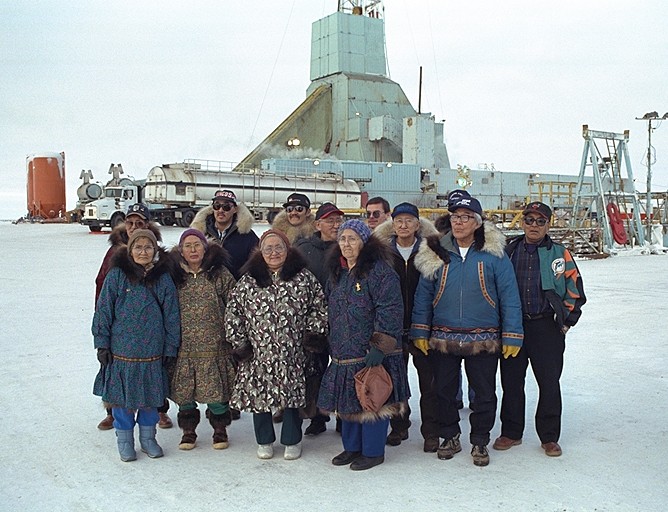Interviewed in 2020, employees reflect on the field’s 20th anniversary

For 20 years, the Alpine oilfield has operated in a remoteness more extreme than other fields on the North Slope of Alaska. Alpine is seven miles from the Beaufort Sea of the Arctic Ocean with only one winter road made of ice between it and Kuparuk. Before the ice road melts, a year’s worth of large-scale supplies must arrive on more than 1,200 tractor truckloads.
“A lot of people compare this logistically to offshore, but I think it’s a little tougher because we’ve got only three months to get supplies in,” said Mike Lyden, operations superintendent at Alpine.

Unlike other North Slope fields, Alpine is not connected to the Dalton Highway and not able to acquire supplies by ground year-round. For some nine months of the year, it is an island on the tundra, where everything and everyone must be flown in. Before the switch to the Q400 aircraft last fall, workers flew to the Kuparuk camp and made a hop on a small plane to reach this farthest west camp.
An unfathomable temperature to most people outside Alaska, 30 below zero in the north is common. In February, at the height of winter work, temperatures can dive to an equipment-malfunctioning minus 50 F. The cold, the darkness, the near hurricane-force winds often cause work delays.

There’s no place like Alpine
Despite the severity of the place, longtime Alpine workers give a nostalgic assessment of the field on its 20th Anniversary.
“We’re all Slopers in one way or another, but we’ve never come together like we have here until we came to Alpine,” said Fieldwide Operations Superintendent Mike Rodriguez, who began his North Slope career in 1980 and retired recently after another 20 years at Alpine.
In 2000, Alpine became the westernmost field on the North Slope, more than 630 miles north of Anchorage and 34 miles west of Kuparuk.

“Many came for the challenge to build something new from the ground up,” said retiree John Murry, who arrived at Alpine 14 days before first oil as one of two operations support supervisors.
During CD1 pad construction, there were more than 1,000 employees. “We didn’t even have chairs,” said Sherry Hemmrich, operations and maintenance administration specialist.

“We were out here on our own and had to make do with what we had,” said Hemmrich’s son, Drill Site Lead Operator Shane Hume. “When I first arrived, we had one [pad] we called CD1. There was one steel building and a rig camp. That was it. The company was building the runway.”
Both mom and son continue to work at Alpine and agree that it’s not just a job on the 71st parallel. “It’s home away from home,” Hume said.
Building our town
Alpine was the first new stand-alone facility on the Western North Slope in nearly two decades. Field construction and development of the facilities took three years and six million man-hours at a cost of more than $1.3 billion.

“It was a settlement. We had to build our town,” said Brian Richards, Alpine’s first operations manager, who retired in 2013.
Jan Evans, manager of North Slope Integrated Operations, was the first facility engineer. “It felt like taking the keys to a brand-new car,” Evans said. “Alpine had all the best safety and instrumentation technology around and a few first production model turbines. There was a lot to figure out,” she said.

Former ConocoPhillips Alaska President Joe Marushack remembers the start of Alpine. “It was a unique challenge, and I commend the women and men who were a part of its construction and development as well as all those who have worked onsite and in town supporting Alpine operations over the last two decades,” he said.

Company CEO Ryan Lance managed Alpine’s construction and startup. “Alpine was the first discovery I worked on after arriving in Alaska in the 1980s,” Lance recalled.
“Two decades later, I’m glad to say that Alpine is still going strong, anchoring our other projects on the Western North Slope and in NPR-A (the National Petroleum Reserve-Alaska). That discovery is key to the indispensable role Alaska has played — and still plays — in our company’s story and America’s energy future,” he said.

Among the frontier challenges, was the timing of the development. “In the middle of construction, the whole of Alaska was stressed by low oil prices,” said Richards.
Despite gritty odds, Alpine accomplished significant records
- First oil at CD1 on Nov. 15, 2000, set the record for shortest North Slope cycle time from discovery to first oil of 6.5 years.
- In 2007, Alpine set its one-day production record of 139,000 BOPD.
- Alpine is the first North Slope field developed exclusively with horizontal well technology, with rigs able to access more than 50 square miles of subsurface from a single drilling pad.
- The first hydraulic bridge launch on the North Slope, using a custom hydraulic package designed to build the bridge five feet at a time over a two-month period to span more than 1,400 feet of water.


The Nigliq Channel Bridge — built in 2014-15 — provided access to the west side of the Colville River Nigliq Channel. The bridge location had to make sense for engineering, access, and cost as well as for key subsistence, hunting and fishing areas.
“Growing up in the village, I never thought I would see a bridge across the Nigliq Channel,” said Curtis Ahvakana, an Alpine contractor since 2005, who joined the company last January as a village outreach liaison. “It was pretty phenomenal for us to finally have access from the east side to the west side.”
Alpine was a landmark development because of the collaboration between the company and the Native landowners.

When CD5 started up in 2015, it was the first commercial oil development on Alaska Native-owned lands within the boundaries of NPR-A. If landowners and subsurface rights owners were not onboard, CD5 would not have been possible.
Arctic Slope Regional Corporation President and CEO Rex Rock, Sr. was at first oil, celebrating with Kuukpik Corporation (the Native village corporation for Nuiqsut) and ConocoPhillips Alaska.
“As the wheel of the valve was turned, we realized that, after many years of production of state-owned lands, our Native-owned subsurface was destined to be developed,” Rock said. “The Alpine and satellite fields promised to deliver years of significant tax revenues to our local government that would support our schools, reliable village power, healthy community water distribution, and other services, improving the quality of life in all North Slope Borough communities.”

ConocoPhillips spent more than eight years studying the environment at Alpine with more years of work for CD5. The studies helped guide placement of drill sites and facilities to minimize the effect on wildlife, water flow and the subsistence lifestyle. The village of Nuiqsut is just eight miles from Alpine. Today, subsistence hunters can often be found on industry roads for access to hunting grounds.
In 2009, when the company expanded drill sites CD3 and CD4, it also delivered free natural gas to the Nuiqsut Gas Pipeline for residents in Nuiqsut.
Rock also highlighted the industry benefits to shareholders. “By virtue of the resource-sharing provisions of ANCSA, the Alaska Native Claims Settlement Act, about 70 percent of the resource wealth of the ASRC-owned subsurface was to be delivered to regional and village corporations around the state. To date, ASRC has shared more than $1 billion dollars with the other regions, which in turn deliver benefits to their own shareholders.”


Alpine set state and North American drilling records
- The 17 longest wells drilled in Alaska, including the North American record at 33,768 feet.
- The most footage drilled through a dual multilateral well with CD5’s 42,993 feet of total combined footage.
“When we started drilling at Alpine the horizontal laterals were 3,000 feet — we thought we were really stepping out then,” said Chip Alvord, Alpine drilling manager for 20 of his 40 years in the industry. “The lateral lengths gradually increased over the years with new technology, lessons learned and some courage. Last year we set a North American lateral record at 21,748 feet.”

Alpine is a near zero-discharge facility, setting the standard for environmental stewardship on the North Slope.
“All drilling waste must be contained, and all fluids are made on site at a small mud plant. We have to be self-sufficient for nine months of the year,” Alvord said.
What veteran employees remember most
Coming to Alpine after 20 years at Prudhoe and six on the pipeline, Stephanie Leman recalls noticing a different dynamic at Alpine. “At Prudhoe and Kuparuk things were so spread out you had to make an effort to meet people. But the Alpine dining room, where we all gathered, wasn’t far from anything on that 90-acre pad,” she said.
“Alpine is just fundamentally good people,” John Murry said. “When you get a bunch of good people, hard workers, innovative, they attract good people. You form a bond.”
“It didn’t matter who you worked for, who you got your paycheck from, what your job was. Every job was important to make Alpine a success,” said Lyden. “That mentality is key to making Alpine the success it has been.”
Early Alpine leaders give credit to retiree Brian Richards for creating the Alpine Credo.
Among the credo’s nine directives:
- We do what it takes to do a job we are proud of, not what it takes to get by.
- We will do what the team needs. “It’s not my job” will never be heard at Alpine.
- We respect each employee’s contribution and treat him or her the same regardless of company affiliation.
- And we will have FUN working at Alpine!!

Fun at an oilfield? Hume said, of course. “People with good attitudes are safe workers. If they’re happy and having fun, and their attitudes are good, their minds are on the job and they’re safer. Disgruntled people on the job are not safe people.”
Nicknames for buildings are part of Alpine Slope lore passed down to newcomers — Area 51, the Swamp, Ice Station Zebra — all tongue-and-cheek names based on movies with extreme plots. At Alpine, the Green Mile — reference to the movie about a miracle in a penitentiary — is the long corridor connecting the shop and warehouses to the plant. Building nicknames let everyone in on the joke of isolation over the years.

More than 450 million barrels and counting
At the CD2 pad, the new Doyon Rig 26, the largest mobile land rig in North America, is ready to drill this summer. Known as The Beast, it will drill world-class wells that extend more than seven miles horizontally from the drilling pad, reducing the need for a larger surface infrastructure footprint.
Reached at home in Nevada, Brian Richards reflected nostalgically. “Alpine was by far the most fun job I have ever had. Nothing ever really quite compared to that.”
When told his Alpine Credo still influences the thoughtful culture of the field, Richards said: “You can’t imagine how good that makes me feel.”

